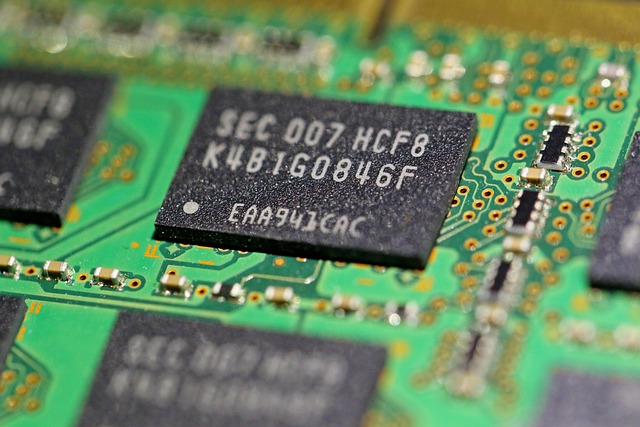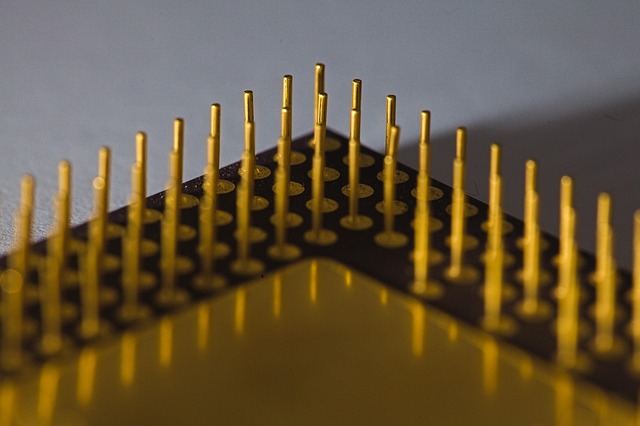Crypto Wallets Explained: A Comprehensive Guide
Author: Jameson Richman Expert
Published On: 2025-04-29
Prepared by Jameson Richman and our team of experts with over a decade of experience in cryptocurrency and digital asset analysis. Learn more about us.
Crypto wallets are essential tools in the cryptocurrency ecosystem, acting as secure storage for digital assets. As someone with extensive experience in the crypto space, I've encountered countless challenges and learning curves that have shaped my understanding of these wallets. Initially, I struggled to choose the right wallet, often falling victim to security flaws and usability issues. However, after much trial and error, I finally found a few options that stood out for their security features and user-friendliness. In this guide, I'll share the knowledge I've gained to help you navigate the complex world of crypto wallets.

Understanding the Types of Crypto Wallets
When I first ventured into cryptocurrency, I remember the confusion surrounding the various types of wallets. Broadly speaking, crypto wallets can be categorized into two types: hot wallets and cold wallets. Hot wallets are connected to the internet, making them convenient for daily transactions, while cold wallets store your assets offline, providing enhanced security for long-term storage. Understanding these differences is critical for making informed choices.
Within these categories, there are specific wallet types to consider:
- Software Wallets: These are hot wallets that can be accessed through your computer or smartphone. While they are user-friendly, they may expose users to online threats. Popular software wallets include Exodus, Electrum, and Mycelium, each offering unique features such as built-in exchange options, customizable security settings, and support for multiple cryptocurrencies. Some software wallets even allow users to interact directly with decentralized applications (dApps), enhancing their functionality. The user experience is often enhanced through intuitive interfaces, enabling users to easily manage their assets.
- Hardware Wallets: These cold wallets, such as Ledger and Trezor, store your private keys offline, offering a high level of security against hacks. They are ideal for long-term investors who prioritize the safety of their digital assets. Hardware wallets often come with additional features like multi-currency support, backup options, and recovery phrases that enable users to restore their wallets if lost. The physical security of these devices makes them a favored choice among serious investors, ensuring that your crypto holdings are insulated from online threats. As technology advances, hardware wallets are evolving to support more cryptocurrencies and enhanced security protocols, such as biometric authentication and secure chip technology.
- Paper Wallets: A form of cold storage, paper wallets involve printing your private and public keys on paper. While highly secure from online threats, they can be easily lost, damaged, or destroyed by physical elements. Generating a paper wallet requires careful consideration of security practices, such as using a trusted generator, ensuring the computer is offline and free from malware, and securely storing the printed document in a safe location. It’s crucial to note that once the paper is lost or destroyed, access to the crypto assets associated with it is permanently lost. Additionally, while paper wallets can offer a high level of security, they are less user-friendly, especially for those who are not tech-savvy, as they require a greater understanding of how to manage private keys securely.
The choice can be overwhelming. I started with a hot wallet, thinking it would be easier for everyday transactions. However, I soon realized that the convenience came with significant risks. As I learned the hard way, keeping large amounts of crypto in a hot wallet made me susceptible to hacks and phishing attacks. This experience taught me the importance of diversifying my storage strategy, utilizing both hot and cold wallets based on my needs. I recommend regularly reassessing your wallet choices as your investment grows or changes to better align with your financial goals and risk tolerance.
The Importance of Private Keys
One critical aspect of using crypto wallets is understanding the importance of private keys. Early on, I didn’t fully grasp the concept of private keys and how they provide access to my funds. I once saved a private key in an unencrypted file on my computer, which was a huge mistake. I realized that if I lost access to my private key, I would lose access to my funds permanently. This painful lesson taught me the importance of storing private keys securely, preferably offline or in a password-protected format. I now recommend using password managers, hardware security modules, or even writing them down and storing them in a safe place, such as a safety deposit box or a fireproof safe. Remember, "not your keys, not your coins" is a mantra that emphasizes this responsibility and highlights the risks associated with custodial wallets. Understanding that your private keys are the gateway to your crypto assets can empower you to make safer choices in managing your investments.
The Rise of DeFi and Wallet Integration
The rise of DeFi (Decentralized Finance) has also changed how we view wallets. With various DeFi platforms emerging, I noticed a growing trend toward using wallets that integrate seamlessly with these platforms. I started using wallets that allowed me to interact directly with DeFi applications, which provided additional utility beyond just storage. For instance, wallets like MetaMask and Trust Wallet enabled me to swap tokens directly from my wallet without needing to go through centralized exchanges, which was a game-changer. The ability to earn yield on my crypto by providing liquidity or participating in yield farming has transformed my investment strategy, allowing me to maximize returns on my holdings. Additionally, many DeFi platforms now require specific wallet types to interact with their services, making it crucial to choose a wallet that supports these integrations to ensure a smooth and efficient user experience. As DeFi continues to grow, having a wallet that can adapt to new protocols and services will be vital for optimizing your investment potential.

Prioritizing Security in Crypto Wallets
When it comes to choosing a crypto wallet, I believe that security should always be the top priority. I often share the importance of using wallets with strong security features, such as two-factor authentication (2FA), hardware security keys, and recovery phrases. These features add layers of protection against unauthorized access. I recommend checking reviews and security audits for wallets before using them, as not all wallets are created equal. In addition, I suggest enabling biometric authentication, where available, for added security. Using cold wallets for larger holdings while maintaining hot wallets for daily transactions can create a balanced approach to security and accessibility, allowing you to manage your assets effectively while minimizing risk. As the threat landscape evolves, staying informed about the latest security practices will be essential for protecting your investments.
Keeping Software Up-to-Date
Another valuable lesson I learned was about the importance of keeping software up to date. I initially neglected this aspect, thinking it was a minor issue. However, I quickly learned that outdated wallets could expose me to vulnerabilities. Now, I make it a point to regularly check for updates and apply them promptly to ensure I’m using the latest security features. It's also crucial to pay attention to the wallet provider's communication regarding any potential security issues or updates. Subscribing to the wallet's newsletter or following their social media channels can provide timely information about security patches and feature enhancements, ensuring that I am aware of any potential risks associated with the wallet I am using. Additionally, engaging with community forums can provide insights into common vulnerabilities and solutions that may arise in the wallet software.
Integrated Trading Features
For those interested in trading and investment, I discovered that some wallets integrate trading features, allowing users to buy and sell crypto directly from their wallets. This seamless integration has made it easier for me to manage my portfolio without having to switch between multiple platforms. I often use wallets that offer integrated trading options, which saves time and reduces the risk of making mistakes during transactions. Features such as limit orders, market orders, and trading charts within wallets can enhance trading efficiency. Additionally, some wallets offer tools for portfolio tracking and analysis, enabling users to make informed decisions based on real-time data and market trends. This integrated approach not only simplifies trading but also empowers users to take advantage of market movements promptly.

Understanding Transaction Fees
As my experience grew, I began to explore the concept of transaction fees. Many wallets charge different fees for sending and receiving cryptocurrencies, which can eat into my profits if I’m not careful. I learned to analyze the fee structure of the wallets I use, particularly when transferring assets between wallets or exchanges. I found that some wallets offer lower fees for certain transactions, which can be beneficial for frequent traders. It's important to compare fees across wallets and networks, as they can vary significantly. Furthermore, being aware of network congestion can help you time your transactions to minimize fees and optimize your trading activities, ensuring you get the best value for your transactions. Additionally, some wallets allow you to set your own transaction fees, giving you control over how quickly your transactions are processed.
Exploring Multi-Signature Wallets
As my experience grew, I began exploring the concept of multi-signature wallets. This type of wallet requires multiple private keys to authorize a transaction, adding an extra layer of security. I set up a multi-signature wallet for my long-term investments, which has provided peace of mind, especially when dealing with larger amounts of crypto. By distributing the responsibility of securing the wallet, I feel more confident in protecting my assets. Multi-signature wallets are particularly useful for businesses and joint accounts, as they can enhance collaborative security. It’s essential to establish clear protocols for managing the keys involved to avoid potential access issues and ensure that all parties involved are aware of their responsibilities. Implementing a multi-signature approach can also foster trust among partners by requiring consensus for transactions.
Researching Your Options
If you’re just starting your crypto journey, I recommend doing thorough research before choosing a wallet. There are many options available, and the right wallet for you will depend on your individual needs and preferences. Resources like Crypto Trade Signals provide valuable insights into different wallets and their functionalities, helping you make an informed decision. Additionally, consider joining online communities and forums to gain insights from experienced users and stay updated on the latest wallet developments. Engaging with these communities can also help you learn about potential pitfalls and security practices that others have encountered, allowing you to navigate the crypto space more confidently. Furthermore, reviewing wallet comparison websites can provide a clearer picture of the pros and cons associated with various options.

Staying Updated on Trends
Moreover, it’s essential to stay updated on the latest trends in the crypto space. The industry is constantly evolving, and new wallet technologies are emerging regularly. Keeping abreast of these developments can help you adapt your strategy and take advantage of new opportunities. Following industry news, subscribing to newsletters, and participating in webinars can enhance your understanding of the rapidly changing landscape. By staying informed, you can also identify which wallets are best suited for your investment strategies as the market shifts, enabling you to remain competitive in your trading endeavors. Additionally, exploring emerging technologies such as non-fungible tokens (NFTs) and their integration into wallets can offer new avenues for investment and engagement.
Conclusion
In conclusion, my journey with crypto wallets has been filled with ups and downs, but each experience has taught me valuable lessons. The key takeaways include prioritizing security, understanding private keys, staying updated, and considering integrated features that can enhance your trading experience. As you navigate the world of cryptocurrencies, remember that a well-chosen wallet can significantly impact your investment success. For more information about the future of crypto wallets, check out Crypto Trade Signals.
Recommended Exchanges for Trading
If you’re looking to dive into crypto trading, consider using reputable exchanges like Binance, MEXC, Bitget, and Bybit, which offer various services and features to enhance your trading experience. You can register through these links: Binance, MEXC, Bitget, and Bybit. Each of these platforms has unique features that cater to different trading styles and preferences, including margin trading, futures trading, staking options, and educational resources for new traders. Understanding the offerings of each exchange can help you make the best choice for your trading strategy. Always remember to conduct your due diligence and consider factors such as security, fees, and user experience when selecting an exchange.

Future Trends in Crypto Wallets
As we look to the future, it's important to recognize the trends shaping the development of crypto wallets. One significant trend is the integration of Artificial Intelligence (AI) and machine learning to enhance security features, predict market movements, and provide personalized user experiences. AI could potentially help in identifying fraudulent activities and enhancing transaction speeds, making wallets even more user-friendly and secure.
Additionally, the rise of Central Bank Digital Currencies (CBDCs) may influence how wallets are used and developed. As governments experiment with digital currencies, wallets will likely need to adapt to accommodate these new forms of money, creating opportunities for innovation in the crypto wallet space. It will be essential for users to remain informed about these changes and consider how they may affect their current wallet strategies and choices. Furthermore, the growing interest in interoperability between different blockchain networks could lead to the development of wallets that can manage assets across multiple chains, enhancing user flexibility and convenience.
Final Thoughts
In summary, navigating the world of crypto wallets requires a blend of knowledge, caution, and adaptability. As the crypto landscape evolves, so too must our approach to managing and securing our digital assets. By staying informed about the latest developments, prioritizing security, and leveraging the right tools and resources, you can ensure a successful and secure experience in the world of cryptocurrencies. Remember, your choice of wallet is not just a matter of convenience but a critical element of your overall investment strategy.